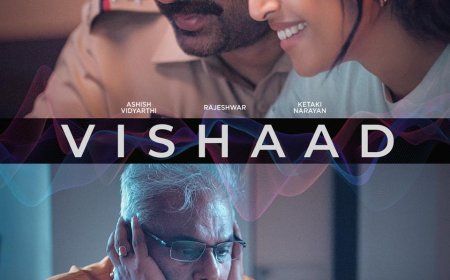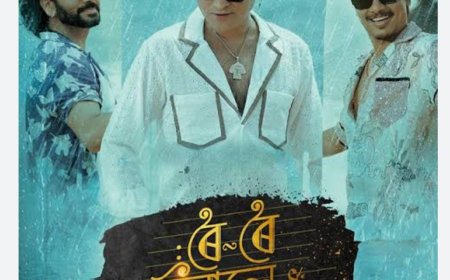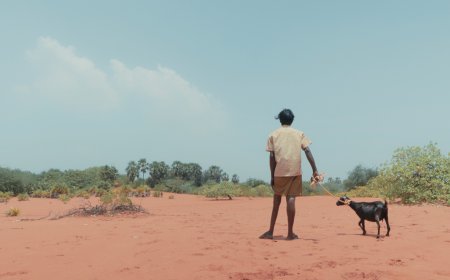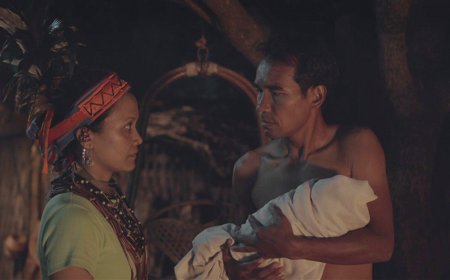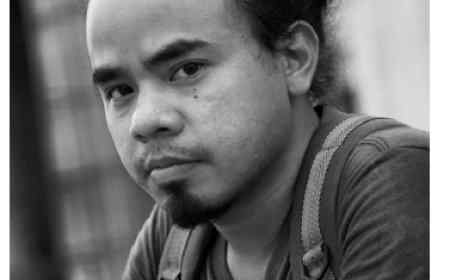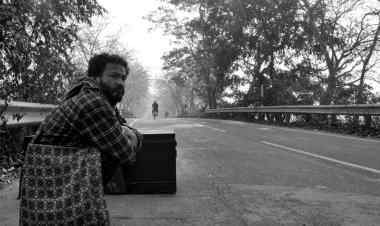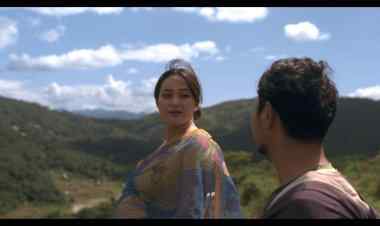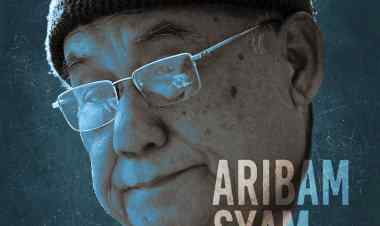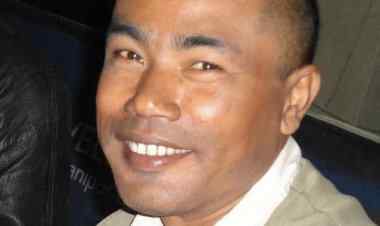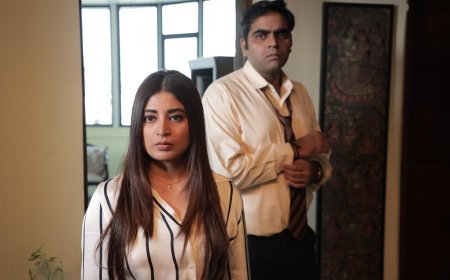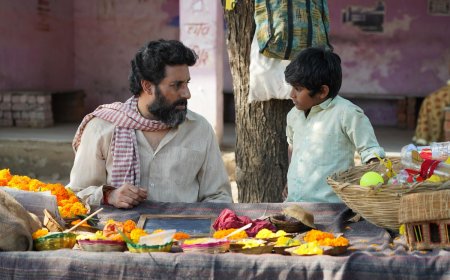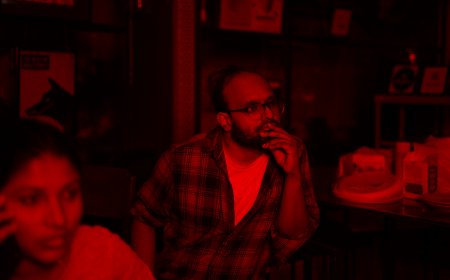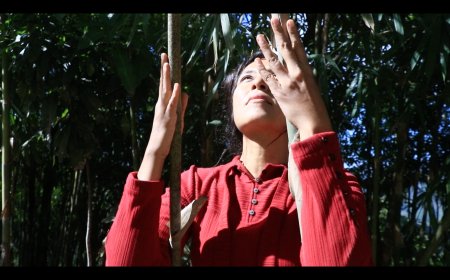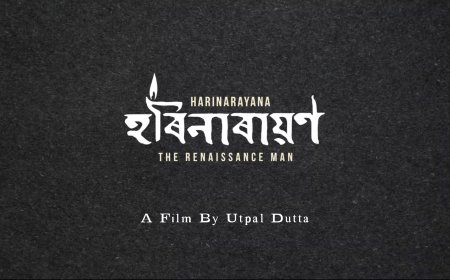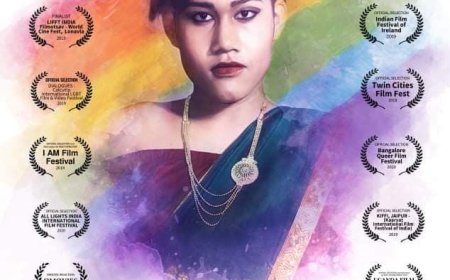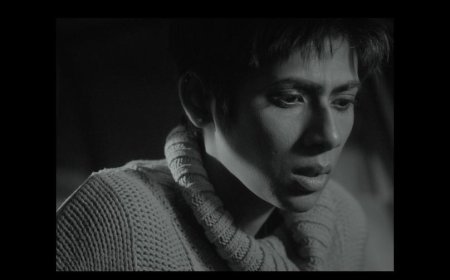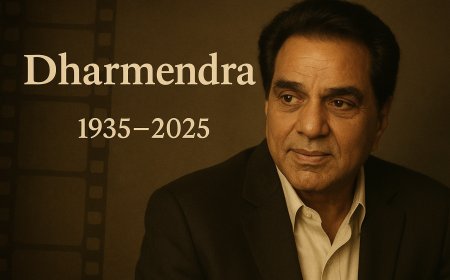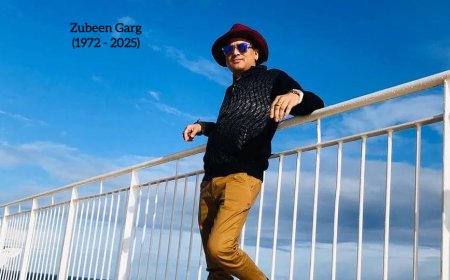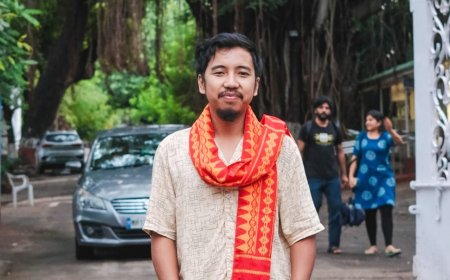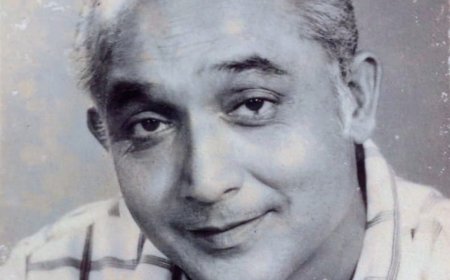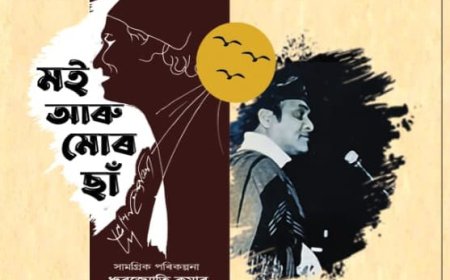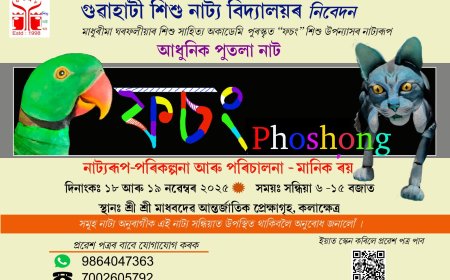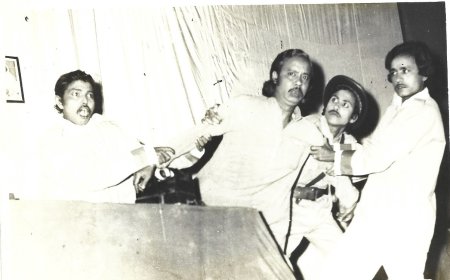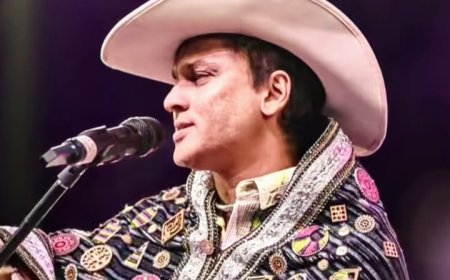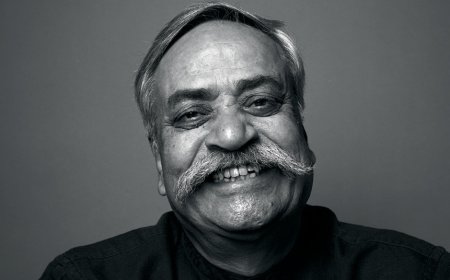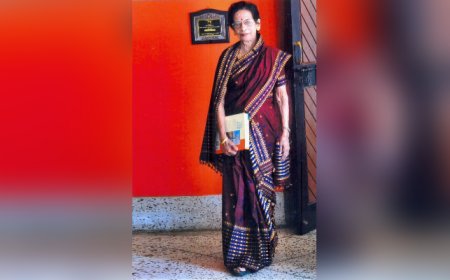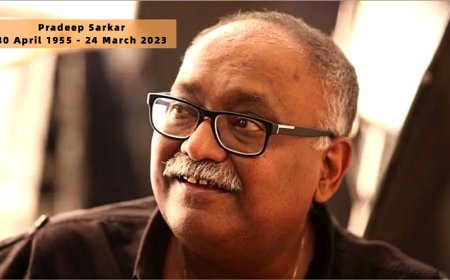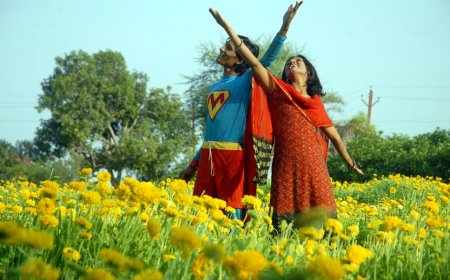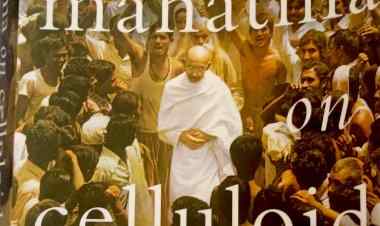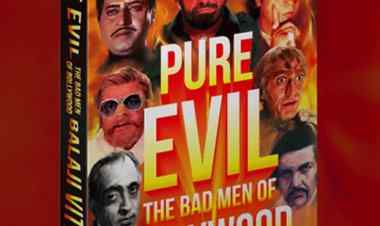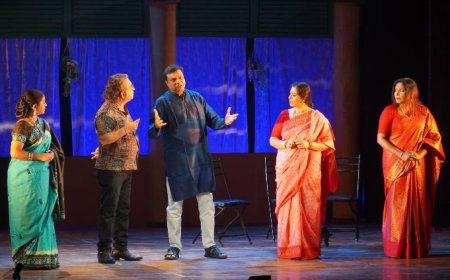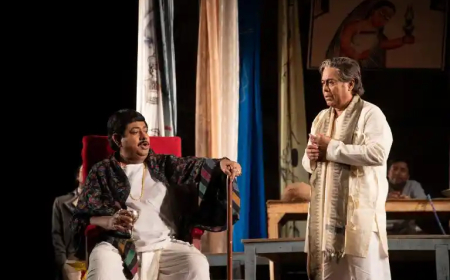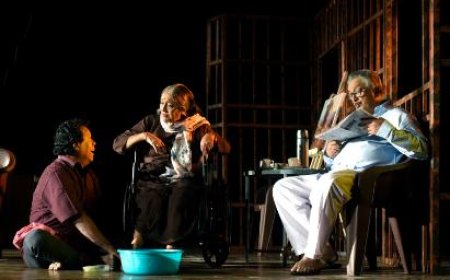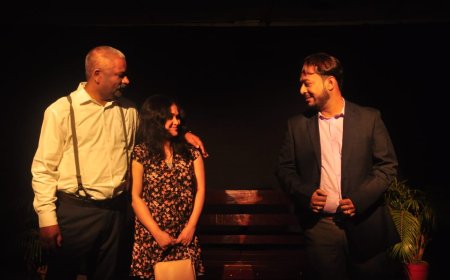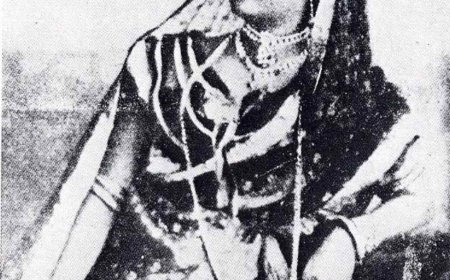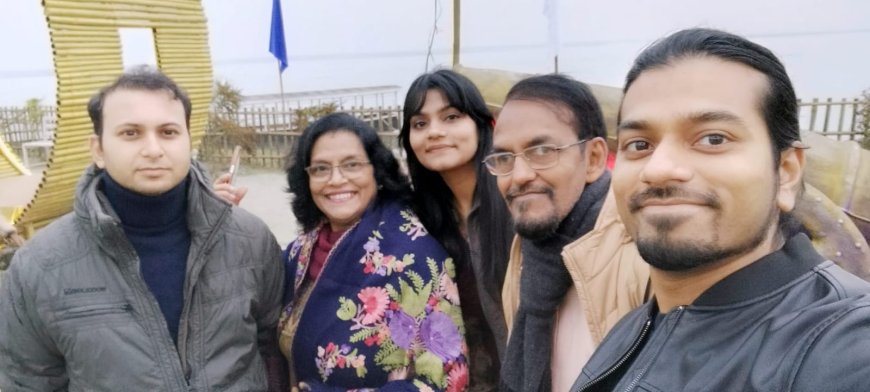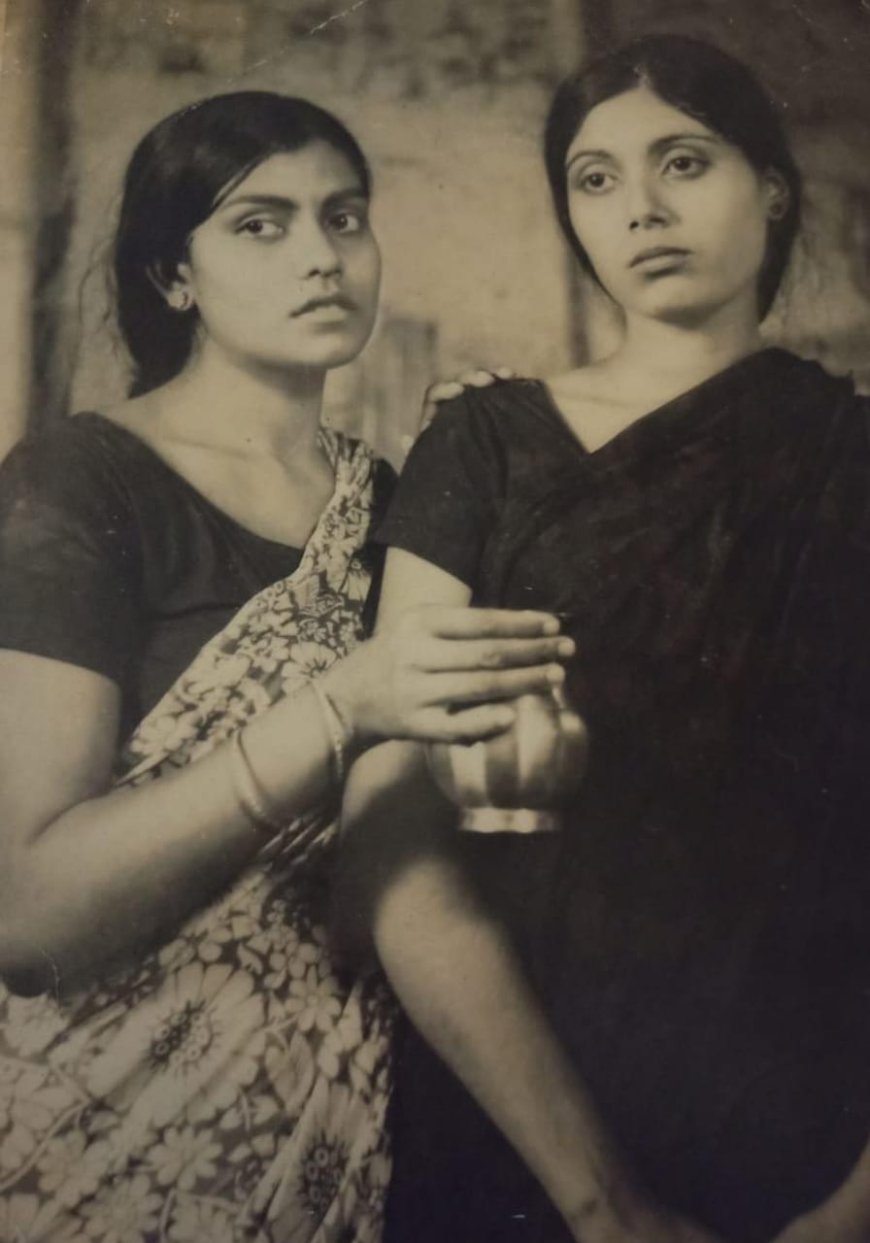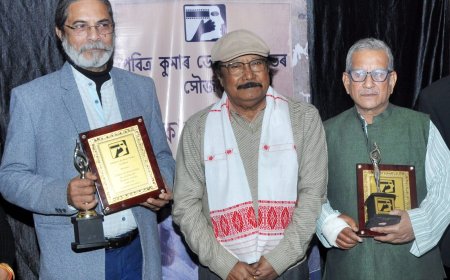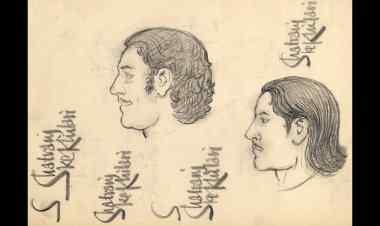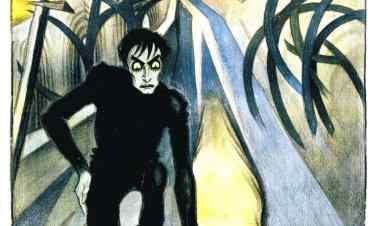Unparalleled Talent and Versatility – Runu Devi
Prantik Deka writes on Runu Devi, an iconic Assamese actress known for her groundbreaking performances in Assamese theatre and films.
An artiste displayed extraordinary talent, intuition, and naturalness in a remarkable play written by a distinguished playwright who has spent years preparing for this enduring masterpiece, frequently referred to as the first absurd play in Assamese literary history.
Playing five different characters in the play, Runu Devi, a teenage sensation, received widespread recognition for her portrayal of the multifaceted female protagonist, which is regarded to be unique in Assamese theatre history. The play was Arun Sarma’s classic ‘Aahaar’, which was directed by Dulal Roy and performed in Guwahati’s Rabindra Bhawan in 1976.
Runu Devi in a scene from 'Kolahol' (1988)
Renowned playwright Arun Sarma once spoke about it in an interview held several years back. “I feel proud that Runu Devi established herself in the cultural arena with a sure promise of acting talent with her unparalleled portrayal of a complex female character in one of my plays nearly three decades ago.”
Born on September 21, 1957, in Guwahati, Runu Devi’s upbringing helped her develop a sensitive mind, and the surroundings she experienced as a child helped her cultivate an artistic and creative mind. She gained instant popularity as a youngster for her performance in the play ‘Sangram Lagne Aaji’ for which she won the Best Child Artist award in 1967. Runu’s father was then posted in Goalpara. She also competed in numerous singing competitions, winning awards and accolades. It paved the door for her destiny given her innate talent for singing and acting.
People crowding the Anuradha Cinema Hall during the screening of 'Sandhyarag' in 1977
Since there were no formal acting schools at the time, Runu instead analysed the facial expressions, body language, sitting positions, and other behaviours of the people who used to visit her family when she was a child. She also used to observe individuals in public.
Although born in Guwahati, her father Bholanath Sarma's transferable job led her to spend her early years in Dibrugarh, Goalpara, Tinsukia, and finally Namrup.
Runu Devi became inextricably linked to the performing arts after arriving in Namrup and meeting several prominent cultural figures. She competed in numerous competitions, including singing, dancing, acting, debating, and received many prizes. She earned the Best Actress award on an all-Assam basis for her performances in Sambhu Gupta’s ‘Stabdha Bihanga’ and ‘Eti Mrityur Janma’ in 1971 and ‘Sendurar Rong Madhurjya’ in 1972. Over the period of 11 years, she steadily established herself as an actress in Namrup.
Dr. Anjan Thakur and Runu Devi
Runu’s acting career really took off once she moved to Guwahati and was attending Handique Girls’ College, where she had the opportunity to participate in a range of cultural events while pursuing her higher secondary and degree courses. Her spontaneous acting caught the attention of the directors and playwrights, who asked her to play the lead in a number of modern, ground-breaking plays. Her performance in the play ‘Abaran’, directed by Jadab Baruah and staged at the District Library in Guwahati in 1974, was recognised by a number of eminent cultural personalities, including singer Jayanta Hazarika, filmmaker and cinematographer Indukalpa Hazarika, filmmaker Phani Talukdar, actor, playwright, and critic Satya Prasad Baruah, among others. She never looked back following that performance. It was an exciting time in her life, as she went on to appear in plays such as ‘Sipa’, ‘Agni Pariksha’, ‘Othello’, ‘Aahaar’, ‘Aadhe Adhure’, among others. Runu’s stage performances demonstrated her infectious enthusiasm for theatre. It has helped her improve and refine her acting techniques.
A Scene from "Sandhyaraj"
In 1975, while still a student at Handique Girls’ College, Runu appeared in a supporting role in her first Assamese film, ‘Niyoti’, directed by Indukalpa Hazarika.
During that time, Rabindra Bhawan decided to open a drama department in the Directorate of Culture under the Assam government, and advertised in the newspaper for the selection of artistes. Runu decided to interview for the acting job since she had plenty of leisure time as the educational institutions were closed owing to the language movement.
At that time, renowned actor, composer, writer, singer, and musician, Rudra Barua served as the director of Cultural Affairs.
Interestingly, Dr. Bhabendra Nath Saikia also served on the interview panel. During the interview, Dr. Saikia posed numerous questions to Runu, and she even performed an improvised scene or two from a brief provided by the filmmaker. She aced the interview and came out on top in the selection process, impressing everyone, including Dr. Saikia.
Runu Devi in a scene from the play 'Mother', directed by Munin Bhuyan
Then she received word from Rudra Barua that Dr. Bhabendra Nath Saikia wanted to meet her right away for a specific reason. It was only after meeting Dr. Saikia that Runu realised he was actually planning a movie. Dr. Saikia had spent nearly seven years searching for the ideal actress to embody the Charu persona for ‘Sandhyarag’, based on his story ‘Banaprastha’, written in 1969, and much to his relief, he eventually found it in Runu, who perfectly looked the part. But she was unable to respond to Dr Saikia’s proposal because her parents were in Namrup at the time.
In order to get her father’s approval for Runu to portray the character of Charu, Bhabendra Nath Saikia travelled all the way to Namrup. “My father gave his approval for my mother to accompany me during the shooting after Dr. Saikia told my parents everything,” Runu Devi recalls.
Runu Devi with Indra Bania in 'Bohagor Duporiya'
Her courage was boosted when she met the film’s cinematographer, Indukalpa Hazarika, who directed her debut film, ‘Niyoti’. “During filming, I developed a strong psychic connection with Sir, and we understood one another totally,” she said. Runu used to frequently watch a servant girl who worked in Dr. Saikia's house in order to prepare her character from an impoverished upbringing. In ‘Sandhyarag’, Runu Devi plays a young maid from a remote village who relocates to the city and, as she grows older, recognises the striking contrast between the city and the society from which she came, not just in terms of material distinctions, but also in terms of intangible ideals and life ethics. So she makes the decision to go back to her village. The film takes a critical look at the character of the middle class, the urban-rural divide, and the irony of changing life perspectives.
Released in 1977, the critically acclaimed ‘Sandhyarag’ received the National Award for Best Regional Film in 1978, and is the first Assamese film to be showcased in the Indian Panorama in the same year. Runu Devi went on to appear in more movies like Anwar Hussain’s ‘Paap Aru Praischitta’, Dr. Bhabendra Nath Saikia’s ‘Anirban’, Jahnu Barua’s ‘Aparoopa’, Atul Bordoloi’s ‘Megh’, and Anil Chaudhary, Binu Bardhan, Girish Choudhury and Shyamol Mukherjee’s ‘Meghamukti’ in the 80s. Runu was quite young when she portrayed the matured character of Bhagyawati, wife of school teacher Rajani, played by Bhola Kakoti, in Dr. Bhabendra Nath Saikia’s ‘Anirban’. The film bagged the Rajat Kamal Award as the Best Regional Film in 1981.
Runu Devi with Arup Baishya and Jupitora Bhuyan in 'Othello'
It was her mother Kiran Bala Devi who inspired her to play different roles. “As a young girl, I performed a lot of older characters, and throughout those roles, I saw my mother as an acting instructor,” Runu Devi recalls. She used to closely observe her mother’s demeanour, her facial expressions, and her emotional states of happiness, sorrow, and anger.
Runu Devi next appeared as Radha, a fiery, independent-spirited village girl who is a member of a theatre group that performs plays in adjacent villages, in Jahnu Barua’s ‘Aparoopa’, which received the National Award for Best Feature Film in Assamese in 1982. Even though Runu doesn’t have much screen time, her performance is memorable.
Runu Devi with Bhola Kakoti in Dr. Bhabendra Nath Saikia’s 'Anirban' (1981)
As an actress, she was motivated by the desire to play a wide range of roles. After showcasing her versatility in serious films, Runu played a glamorous role in Jones Mahalia’s well-received ‘Bohagor Dupariya’, which was a far cry from her previous roles. “I wanted to gauge my own abilities by playing an exceptional character. I was old enough to wear high heels and wear my hair in top knots.” The film provided a break from the routine of her melancholic roles. The 1984 release, with a popular ensemble cast of Nipon Goswami, Biju Phukan, George Baker, Brajen Bora, Runu Devi, Arun Nath, Mridula Barooah among others, became an enormous hit at the box-office. The film’s success proved that the public didn't quite perceive her as an actress from artistic cinema.
The critically acclaimed ‘Kolahol’ marked the third collaboration between Runu Devi and Dr. Bhabendra Nath Saikia. “Starting with ‘Sandhyarag’, I believe that ‘Kolahol’ is a different kind of cinema. In my opinion, ‘Kolahol’s character was far more difficult and of superior quality than ‘Sandhyarag’. Since I had developed an intimate relationship with Dr. Bhabendra Nath Saikia sir, it was easy for me to grasp the style of acting he required of me. It took a lot of effort on my part to incorporate those emotions, body language, and spontaneity into my performance.” To retain the authenticity of those special shots, Dr. Saikia refrained from using retakes in ‘Kolahol’. He employed a single take for practically every shot in the movie. Runu’s rawness in expressing hesitation and fear is both stunning and unnerving, and she was careful not to allow artificiality interfere with her performance.
Runu Devi in 'Megh' (1979)
‘Kolahol’ led to one of her most memorable moments in her acting career. In a scene from the film, Kiran, played by Runu Devi, is handed a rice sack to assuage her hunger after her son Moti dies when the same rice sack crashes on him. Since Kiran is struggling to survive, she is forced to consume rice from the blood-stained sack. Kiran’s rational perspective on life’s challenges compels her to swallow a handful of rice. At that moment, Runu’s tears welled up spontaneously under the strain of her emotional feelings. This particular act was a synthesis of the cognitive and emotive minds.
“Following the shooting, Saikia sir appeared to be distraught. Even his eyes started to get a little teary,” Runu recalls.
A realist melodrama based on Dr. Saikia’s story ‘Endoor’ (Rats), written in 1969, ‘Kolahol’ won the National Award for Best Assamese Feature Film in 1988. Runu was one of two actresses, along with Archana, to make the National Film Awards Best Actress shortlist. Finally, Archana won the National Award for her performance in the Telugu film 'Daasi', while Runu Devi’s performance was much appreciated. Derek Malcolm, an internationally famous film critic, wrote a glowing review in London’s ‘The Guardian’ newspaper on the film as well as Runu Devi’s performance.
Runu Devi in 'Niyoti'
After ‘Kolahol’, Runu appeared in Phani Talukdar’s ‘Sipinir Sapoon’, Gautam Bora’s ‘Laaz’, Suman Haripriya’s ‘Koina Mur Dhunia’ and Kadamtole Krishna Nache’, Bobby Sarma Baruah’s ‘Adomya’, Hemanta Kumar Das’s ‘Othello’ and Zubeen Garg’s ‘Kanchanjangha’.
A classical dance-based musical about the socio-cultural aspects of the Vaishnavite religion, founded over 500 years ago by Great Saint Sankardeva, ‘Kadamtole Krishna Nache’ won the National Award for Best Assamese Film in 2007. Runu gained an entirely new perspective after participating in ‘Kadamtole Krishna Nache’.
Runu Devi received critical appreciation for her impressive portrayal of the revolutionary Pabitri in the film ‘Othello’, which was a tangential representation of Shakespeare’s famous play as it explored mistrust and prejudice in a society ridden with political turmoil. The film was a cinematic breakthrough, receiving numerous prizes and honours, including the National Award for Best Film in Assamese in 2015 and selection for the Indian Panorama. After that, Runu Devi starred in a hardcore commercial entertainer ‘Kanchanjangha’, which was released on September 6, 2019. The film became the biggest grossing Assamese film in history, until Jatin Bora’s ‘Ratnakar’, which was released a month later, surpassed it.
Runu in 'Sandhyarag'
Runu relished variety in her roles. Regarding her preferred role, she said, “I will only agree to act in a film if I enjoy the character. Every artiste likes playing roles that allow them to express their inherent acting talent. Apart from that, I have an affinity for a range of characters.” She also ensured that her portrayal of Kiran in ‘Kolahol’ differed from that of Charu in ‘Sandhyarag’, and she also distinguished herself as the revolutionary lady in ‘Othello’. Her depictions in most of the films focus on women, and the public responded favourably to those portrayals. Although some of her other movies are not specifically female-centric, the characters she portrays are significant to the plot. She was well aware of the expectations placed on her by being cast in a film.
“The characters in the films I performed provided many possibilities for me to continue performing while avoiding monotony.” Her variety is evident in her performances, as Bhagyawati in ‘Anirban’, Kiran in ‘Kolahol’, and the rustic girl in ‘Bohagor Dupariya’ are entirely distinct to one another. “Isn’t this a reflection of the variations in acting?,” she asked. The reflection of a woman’s personal hunger in the character of Kiran in ‘Kolahol’ has a universal appeal, while the struggle or sacrifice of the revolutionary woman in ‘Othello’ to achieve uncompromising societal objectives elicits similar emotions.
Runu also believes that Assamese artistes typically experience more sorrow than joy when their innate talents or abilities are not fully exploited.
Throughout her acting journey, she consistently found time for stage productions even when she was acting in films. In 1976, Runu Devi made an enduring impression when she played five different roles simultaneously in Arun Sarma’s absurd drama ‘Aahaar’ at Rabindra Bhawan in Guwahati. Since then, this unique drama, ‘Aahaar’, has been performed on numerous stages around Assam. The play represents a watershed moment in her life. “It was my most challenging and favourite performance, and in my opinion, Dulal Roy’s version of the absurd drama may have accurately expressed the subject matter,” Runu said. It took a great deal of effort and skill on the part of the play’s artistes and technicians to adapt to Dulal Roy’s presentation style. Runu went through extensive rehearsals to develop the acting skills required to flip between characters, changing their complete appearance, makeup, and clothing for a brief period of time while the lights were turned on and off.
Brajen Borah and Runu Devi in 'Bohagor Duporiya'.jpg
In 1998, Runu Devi once again captured the hearts of theatregoers with her stirring performance in the play ‘Maa’, which was directed by Munin Bhuyan and was based on Maxim Gorky’s renowned 1906 novel ‘Mother’. Runu was emotionally moved by the character ‘Maa’ after reading the book, which depicts a hard-working peasant woman’s selfless and protective concerns for her people’s crushed spirits. “The play by Munin Bhuyan featured some Brechtian elements, and I decided to act in it because of its exceptional presentation.” The play was successfully presented in the Dibrugarh District Library thanks to the collaborative efforts of the artistes and technicians.
Runu Devi’s notable stage credits include performances in plays such as ‘Sendurar Rong Madhurjya’ directed by Sambhu Gupta, ‘Sipa’ directed by Mahendra Borthakur, ‘Agni Pariksha’ directed by Phani Talukdar, ‘Othello’ directed by Satya Prasad Baruah, ‘Saporit Radhika’ directed by Rajiv Phukan, and ‘Bojarat Amala’ directed by Giasuddin Ahmed, among others.
Runu Devi aspired to acquire a taste of the mobile theatre stage after years of acting on amateur stages. She rose to prominence in the mobile theatre scene when she played the titular character in Hemanta Dutta’s play ‘Cleopatra’ on the Kahinoor Theatre stage during the 1982-83 session. The experience of acting in the play was unique to her.
Runu Devi with Mahananda Sarma in Kahinoor's play 'Cleopatra'
During her time at Kahinoor, an intriguing incident unfolded that will always be engraved in her memory. The theatre group relied on the major production ‘Cleopatra’, and Runu would be extremely exhausted from playing Cleopatra for four days in succession in various locales. But, for once, even a weary Runu willingly volunteered to play the lead heroine in the play ‘Bishkanya’ at a show in Nagaon during one of her rare free days, when the play’s heroine unexpectedly fell ill. She took on the role despite having no prior knowledge of the play or its dialogues. As a matter of fact, the play includes both a dance and a murder scene. Runu, however, quickly grasped her lines and movements and synchronised flawlessly with the play’s hero. In addition to performing dramatic scenes, Runu also danced with the hero. Everything went as planned, the play was competently presented, and producer Ratan Lahkar was very pleased with the crowd’s response to the performances. “I had the chance to meet people from different backgrounds and lose myself in their thoughts while I was performing in Kahinoor’s ‘Cleopatra’,” she says.
During her stint with Hengool Theatre in 2001-2002, Runu performed in a variety of plays, including ‘Godmother’, ‘Hitlistot Eibar’, ‘Gosain Thanor Saki’, ‘Joy Porajoy’, etc.
Some of Runu Devi’s noteworthy radio dramas at the national level are ‘Malia’, ‘Hey Bodon’, ‘Prithivi Aru Manuh’, ‘Baagh’, ‘Bibah Bissed’, and so on. Her regional radio performances include ‘Ejon Manuhor Jonmo’, ‘Notir Puja’, ‘Jojati’, ‘Prithibir Prem’, ‘Bhugjora’, ‘Poloma’, ‘Numali Konwari’, ‘Bir Chilarai’, ‘Shivajir Tez', ‘Banoprostho’, ‘Bolia Gukhai’, and others.
Some of her notable TV serials are ‘Raktim’, ‘Dukhuni Aitar Malita’, ‘Koka Deuter Haar’, ‘Fand’, ‘Putrahonta’, ‘Pita Putra’, and the telefilm ‘Shatabdi’.
Runu in a scene from Kolahol
Runu Devi has been married to Anjan Thakur, a former Regional Director – National Productivity Council, since 1984, and they have two children, Sneha Devi and Ambarish Thakur. Through her artistic endeavours, Runu Devi has portrayed a wide range of emotions, including joy, sorrow, and the deceptions of different social strata on film, television, radio and theatre. “As an ordinary cultural worker, mother, and citizen of the country, I experience some emotions. A positive outlook on life, in my opinion, is what motivates people to do anything in particular,” she concludes.
*****
What's Your Reaction?







